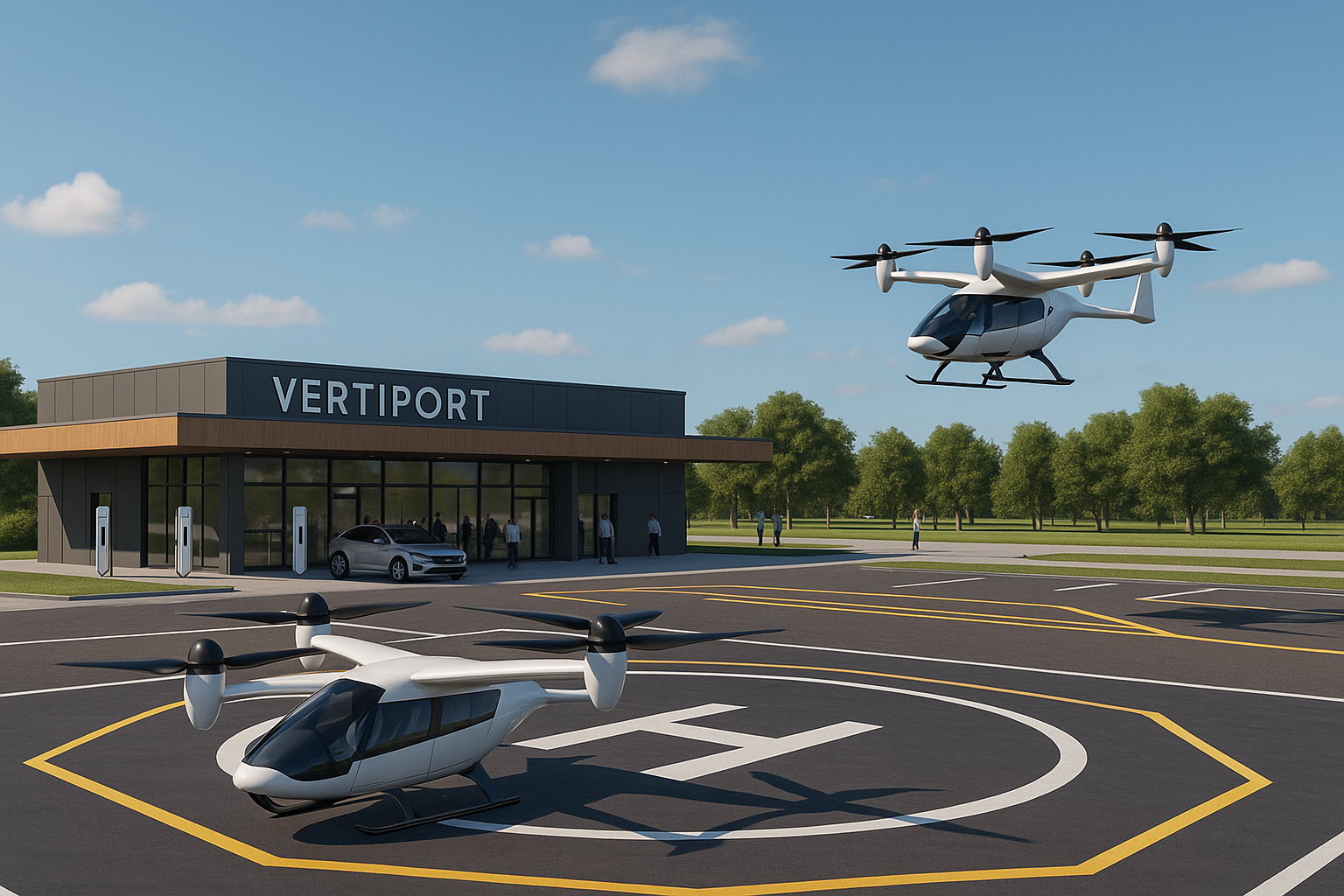Electric Aircraft Symposium 2025 Recap: Progress, Policy, and Powertrains

"EV World Si-generated vertiport concept"
By EV World Si Special Report
The 19th Annual Electric Aircraft Symposium (EAS), hosted by the Vertical Flight Society (VFS), returned to Oshkosh just ahead of EAA AirVenture 2025. Held at the University of Wisconsin–Oshkosh, the two-day hybrid event gathered more than 150 in-person and virtual attendees, along with over 40 expert speakers from across North America, Europe, and Australia. The forum delivered a deep technical dive into the current trajectory of advanced air mobility (AAM), addressing electric and hybrid-electric aircraft, certification challenges, propulsion system breakthroughs, and emerging policy frameworks.
The 19th Annual Electric Aircraft Symposium (EAS), hosted by the Vertical Flight Society (VFS), returned to Oshkosh just ahead of EAA AirVenture 2025. Held at the University of Wisconsin–Oshkosh, the two-day hybrid event gathered more than 150 in-person and virtual attendees, along with over 40 expert speakers from across North America, Europe, and Australia. The forum delivered a deep technical dive into the current trajectory of advanced air mobility (AAM), addressing electric and hybrid-electric aircraft, certification challenges, propulsion system breakthroughs, and emerging policy frameworks.
Key Themes and Developments
1. Regulatory Momentum: FAA's MOSAIC and Global Alignment
A central focus was the FAA's forthcoming MOSAIC (Modernization of Special Airworthiness Certification) framework, which promises to accelerate the certification of electric light sport aircraft (LSA) and two-seat eVTOL designs. Matt Smith from AIR EV confirmed that the regulatory structure is "weeks from rollout," potentially opening the door to the first wave of certified electric aircraft.
Wisk Aero’s Tom Gunnarson emphasized the critical role of international harmonization in autonomous flight certification. He noted active collaboration with the FAA and reference to recent executive orders supporting the integration of uncrewed aircraft systems into national airspace.
2. Technological Advancements: Hybrid, Hydrogen, and Vertical Lift
Breakthroughs in hybrid-electric and hydrogen propulsion stole the spotlight. Horizon Aircraft unveiled progress on its hybrid VTOL platform, which combines folding wings and hybrid power for extended range and cargo versatility. Certification is targeted for 2028.
Other companies—magniX, Ampaire, BETA Technologies, Electra.aero, and H2FLY—shared propulsion innovations ranging from battery-dense powertrains to cryogenic hydrogen fuel cells. Key challenges remain: thermal management, power density, and weight efficiency.
3. Infrastructure and First Responder Applications
AAM infrastructure, including vertiports, charging stations, and vehicle-to-grid (V2G) systems, took center stage. A standout session featured emergency response leaders exploring electric aircraft roles in medevac, wildfire monitoring, and disaster relief operations.
4. Certification Bottlenecks and Workforce Readiness
Concerns over slow certification timelines and workforce development were repeatedly raised. Training pipelines, modular simulation tools, and electrification education are now essential to AAM scalability.
Achievements and Takeaways
- FAA’s MOSAIC framework is poised to unlock new aircraft categories for commercial operation.
- Hybrid and hydrogen aircraft designs are nearing test-readiness, though systems integration remains complex.
- Standardization efforts for autonomy, airspace communication, and digital certification are gaining traction.
- Electric aircraft are increasingly linked to climate resilience and emergency response strategies.
Looking Ahead
EAS 2025 reaffirmed its role as the industry’s leading technical gathering for electric aviation. While AirVenture dazzled general audiences, EAS offered hard insights into the regulatory and technological path forward. With significant propulsion platforms approaching the test flight phase and a policy environment beginning to shift, electric aviation may soon transition from possibility to practice—if regulatory frameworks and public trust can keep pace.
Original Backlink
Views: 563
Articles featured here are generated by supervised Synthetic Intelligence (AKA "Artificial Intelligence").
